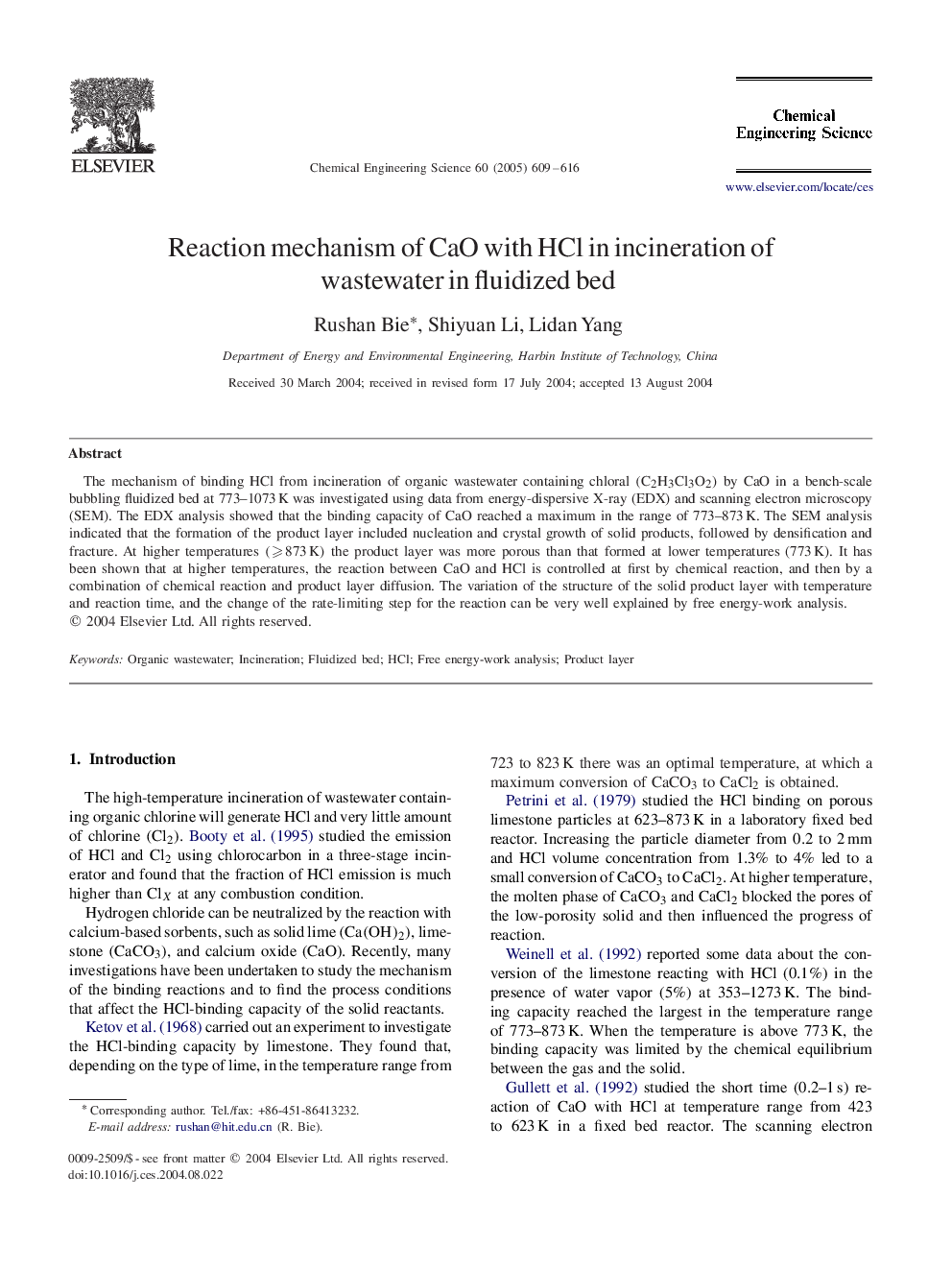| Article ID | Journal | Published Year | Pages | File Type |
|---|---|---|---|---|
| 10263731 | Chemical Engineering Science | 2005 | 8 Pages |
Abstract
The mechanism of binding HCl from incineration of organic wastewater containing chloral (C2H3Cl3O2) by CaO in a bench-scale bubbling fluidized bed at 773-1073 K was investigated using data from energy-dispersive X-ray (EDX) and scanning electron microscopy (SEM). The EDX analysis showed that the binding capacity of CaO reached a maximum in the range of 773-873 K. The SEM analysis indicated that the formation of the product layer included nucleation and crystal growth of solid products, followed by densification and fracture. At higher temperatures (⩾873K) the product layer was more porous than that formed at lower temperatures (773 K). It has been shown that at higher temperatures, the reaction between CaO and HCl is controlled at first by chemical reaction, and then by a combination of chemical reaction and product layer diffusion. The variation of the structure of the solid product layer with temperature and reaction time, and the change of the rate-limiting step for the reaction can be very well explained by free energy-work analysis.
Related Topics
Physical Sciences and Engineering
Chemical Engineering
Chemical Engineering (General)
Authors
Rushan Bie, Shiyuan Li, Lidan Yang,
